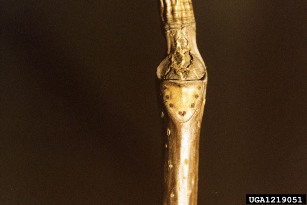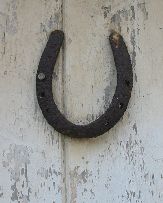 Geography
Geography
Even though the Horse Chestnut is seen throughout the temperate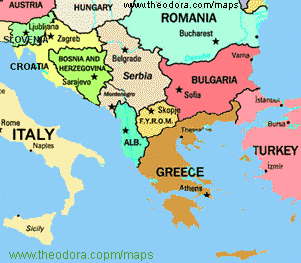 zones
in the Northern Hemisphere today, the species originated in the
Balkan Peninsula. Greece and Albania contained the significant
proportion of this native population. In fact, the geographical
area including Greece and Albania house a large amount of
biological diversity. The
US Forest Service reports that Albania alone includes almost
30% of all plant species in Europe even though it only
encompasses a land area smaller than that of Maryland. The
Convention on
Biological Diversity
reports that up to 25% of the estimated 50,000 animal species in
Greece are
endemic to the country. In fact, Greece is part of the
larger Mediterranean Basin
biological hotspot.
zones
in the Northern Hemisphere today, the species originated in the
Balkan Peninsula. Greece and Albania contained the significant
proportion of this native population. In fact, the geographical
area including Greece and Albania house a large amount of
biological diversity. The
US Forest Service reports that Albania alone includes almost
30% of all plant species in Europe even though it only
encompasses a land area smaller than that of Maryland. The
Convention on
Biological Diversity
reports that up to 25% of the estimated 50,000 animal species in
Greece are
endemic to the country. In fact, Greece is part of the
larger Mediterranean Basin
biological hotspot.
These
beautifu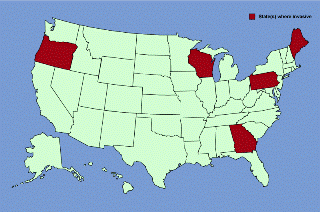 l trees migrated outside of the Balkan Peninsula due to
widespread cultivation. People began to cultivate this tree to a
large extent because of its ornamental features. today, members
of the Aesculus Hippocastanum extend throughout the
Northern Temperate Zone. They are particularly present in
the United Kingdom, Germany and the United States. The Horse
Chestnut has even been so successful in these non-native
environments that it has escaped cultivation in many areas.
Specifically in the United States the National Park Service
stated that in 2006 Georgia, Maine, Oregon, Pennsylvania and
Wisconsin all reported this species as invasive.
l trees migrated outside of the Balkan Peninsula due to
widespread cultivation. People began to cultivate this tree to a
large extent because of its ornamental features. today, members
of the Aesculus Hippocastanum extend throughout the
Northern Temperate Zone. They are particularly present in
the United Kingdom, Germany and the United States. The Horse
Chestnut has even been so successful in these non-native
environments that it has escaped cultivation in many areas.
Specifically in the United States the National Park Service
stated that in 2006 Georgia, Maine, Oregon, Pennsylvania and
Wisconsin all reported this species as invasive.

 Habitat
Habitat
A large variety of habitats can sustain Horse Chestnut trees
because of their strong resilience
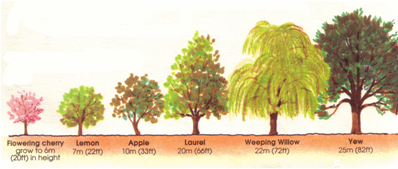 to environmental factors.
These trees easily thrive in almost any soil including clay,
chalk, sand, and acidic/alkaline soil. However, this being said,
Aesculus Hippocastanum prefer moist, well-drained and
fertile soil. Ideally the environment would also have full sun with little chance of drought. This is because any hot, dry
situation could cause leaf scorch and other problems. This tree
needs a relatively mediocre amount of area to grow as they can
spread wider than 8 meters (approx. 26 feet) and obtain heights
of about 12 meters (approx. 40 feet). This is shorter than
an average Laurel tree but taller than the a common apple tree. However, even though
this is a significantly sized tree, it can thrive with little room for root
growth.
to environmental factors.
These trees easily thrive in almost any soil including clay,
chalk, sand, and acidic/alkaline soil. However, this being said,
Aesculus Hippocastanum prefer moist, well-drained and
fertile soil. Ideally the environment would also have full sun with little chance of drought. This is because any hot, dry
situation could cause leaf scorch and other problems. This tree
needs a relatively mediocre amount of area to grow as they can
spread wider than 8 meters (approx. 26 feet) and obtain heights
of about 12 meters (approx. 40 feet). This is shorter than
an average Laurel tree but taller than the a common apple tree. However, even though
this is a significantly sized tree, it can thrive with little room for root
growth.
These resilient characteristics allow the Horse Chestnut to
be cultivated in many different environments all throughout the Northern Hemisphere.
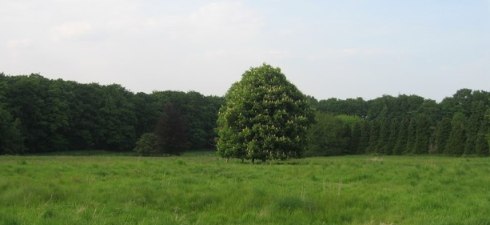 They are readily grown in parks, along
streets, on campuses, in large public areas, within golf
courses, and arboreta. Landscapers and/or residents in downtown
areas with elevated pollution levels will have trouble growing
Horse Chestnut trees because they are sensitive to pollution.
Also, their large size and their
allelopathic nature of their roots restrict the number able
to grow successfully within small areas.
They are readily grown in parks, along
streets, on campuses, in large public areas, within golf
courses, and arboreta. Landscapers and/or residents in downtown
areas with elevated pollution levels will have trouble growing
Horse Chestnut trees because they are sensitive to pollution.
Also, their large size and their
allelopathic nature of their roots restrict the number able
to grow successfully within small areas.
If you would like to read about another North American organism
visit
Morel.
